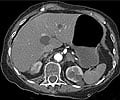Smoking cessation programs geared to teen smokers are effective, a new review of studies has found. Teens who participate are more likely to kick the tobacco habit than those who attempt to quit on their own.
'Most teens who are smokers do want to quit, but they need a lot of help, just as adults do,' said lead author Steve Sussman, Ph.D., of the University of Southern California. 'The good news is that teen smoking cessation looks promising. Programs have been developed that as a group are showing some effects.'The most effective programs seem to be those that enhance motivation to quit, teach problem-solving skills or other cognitive-behavioral techniques to help teens cope with stress and temptation, or combat social influences that encourage smoking.
The review appears in the latest issue of Health Psychology as part of a new series. Each evidence-based review published centers on a specific psychological assessment or treatment conducted in the context of a physical disease process or risk reduction effort.
For this review, Sussman and his colleagues pooled together the findings from 48 studies that were focused on teen smokers and that used a control group. Sussman is the principal investigator for Project EX, one of the included programs.
The adolescents enrolled in these studies smoked an average of 10 cigarettes a day. About half of the participants were female. In the studies that recorded ethnicity, most of the teens were white.
The quit rate for teens who participated in smoking cessation programs was 9.1 percent, compared with 6.2 percent for teen smokers in the control group. This 2.9 percent absolute improvement translated to a 46 percent increase in the likelihood that teens enrolled in programs would quit.
Advertisement
Social influence programs, which counter tobacco industry promotions, media images and peer pressure, also significantly increased the quit rate.
Advertisement
The number of sessions included in a program was also a significant factor in success. Programs that had at least five sessions were more likely to be successful than those with four or fewer sessions.
'In our previous review, it looked like the greater the number of sessions, the higher the quit rate,' said Sussman. 'In this more careful analysis of controlled studies, it appears to be the case that the quit rate levels out at five sessions.'
But Sussman cautioned against interpreting this to mean that more than five sessions would be a waste of time or money. That’s not necessarily true, because we don’t know what the critical material is, he said: 'Which five sessions? '
Interestingly, the review found that studies with a follow-up greater than 12 months showed higher quit rates than studies with a shorter follow-up. Among studies of adult smokers, quit rates usually decline with longer follow-up.
In adult programming, the quit rate may start at 50 percent and then go down to 25, which is the opposite of the trend we saw, said Sussman. 'However, because there are too few studies done in the teen population — and only five of the 48 studies followed teens for more than one year—everything has to be stated tentatively.'
One reason for the dearth of teen cessation research, said Sussman, was the long-held belief that teens don’t want to quit. But in a recent Centers for Disease Control survey of high school students, 61 percent of teen smokers wanted to quit smoking and a similar percentage reported trying to quit during the previous 12 months.
According to Robin Mermelstein, Ph.D., director of the Center for Health Behavior Research at the University of Illinois at Chicago, this systematic review provides reason for optimism, but important questions remain unanswered.
There are specific types of programming that we can offer to adolescents and feel confident that what we’re offering is better than if they just try on their own, she said. But overall quit rates for teens are disappointingly low — substantially lower than what we see with adults. We need to start to understand who this works for and why. What are we missing here to boost those rates higher?
'Evidence-based Treatment Reviews'” is a new series initiated within Health Psychology, an official journal of the American Psychological Association. This series of articles is intended to inform health psychology practice, add to teaching and mentoring resources, and inspire further evidence-based research and questions.
Source-Newswise
SRM











